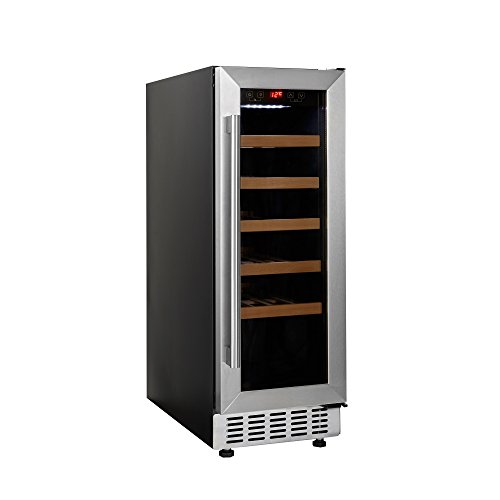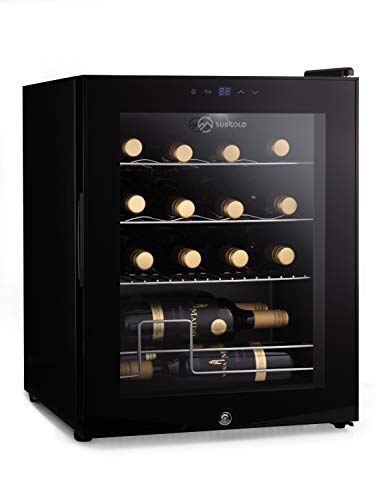7 Simple Tricks To Rolling With Your Wine Cooler And Fridge
페이지 정보
작성자 Mellissa 작성일25-01-07 19:31 조회6회 댓글0건관련링크
본문
 How a Wine Cooler and Fridge Can Help Preserve Your Cabernet Sauvignon and White Zinfandel
How a Wine Cooler and Fridge Can Help Preserve Your Cabernet Sauvignon and White ZinfandelKeep your Cabernet Sauvignon and White Zinfandel at their optimal serving temperatures with wine refrigerators. Some, like the KitchenAid(r) Undercounter Wine Cellar, also regulate interior humidity levels to help protect labels and wine from mould.
Traditional refrigerators are full of hazards that can deteriorate the wine's flavorful aroma. This is why wine refrigerators are available.
Temperature Ideal
A wine fridge is an excellent way to keep your collection of wines at the ideal serving temperature. This makes it easier to serve them. The temperature of the wine needs to be maintained constant and stable to ensure the taste and aroma of the wine while slowing down the aging process. The temperature of the wine should be a bit lower than the room temperature in order to prevent the wine from getting too cold and losing its flavor.
The best wine coolers maintain a temperature of between 54 and 56 degrees Fahrenheit (11.4 and 13.5 Celsius). This is the ideal temperature range for long-term storage, since it slows the aging process and prevent the wine from becoming dry. The temperature should not be too high, as it could cause oxidation and other problems.
You can either use a single zone wine refrigerator to store all your wine, or purchase a dual zone wine refrigerator that lets you separate wine into two zones to better control the temperature. For instance, you could keep your red wines in one region and your white wines in the other in order to easily serve them at the right temperature for each type of wine. This will enhance your drinking experience and make it easier for you to host a cocktail party or dinner, since you can simply move the bottles into the proper zone prior to the night before.
Certain models of wine refrigerators include a user's manual which includes information about the specific temperature settings. This manual is crucial to understand the features of temperature control on your wine cooler. It is also a good idea to check regularly the temperature of your wine refrigerator, as fluctuations can occur. It is recommended to keep the wine refrigerator under cabinet refrigerator in a location away from heat and sunlight sources which will help to keep the interior of the fridge from overheating. It is recommended to not open the wine refrigerator frequently, as this may cause the temperature to fluctuate.
Humidity Control
Humidity is an important element in the storage of wine. Low humidity levels cause corks to dry out, compromising the seal and allowing oxygen in to enter the bottle. This alters the taste of the wine and can result in off-flavors. High humidity can encourage the development of mildew and mold which can impact the labels on wine bottles. A wine cooler with humidity control can help get the best aging possible for your collection of high-end wines.
The ideal humidity range is between 50% and between 50% and. Certain wine refrigerators come with a dehumidifying feature that helps regulate humidity. It helps remove excess moisture. It is important to remember that high humidity levels can influence the quality and readability on wine labels. A consistent humidity level also encourages even aging and the development of complex flavors over time.
Humidification methods for your wine fridge are easy and simple to implement. The most common method is to use a small tray of water is placed at the base of the refrigerator. In time the water will evaporate, increasing the humidity of your wine refrigerator. You could also consider adding a humidifier that is made for small spaces. Many are energy efficient and feature a a humidity setting that can be adjusted.
Baking soda is a different option. It is a natural substance that absorbs moisture. properties. Open a container and place it in a strategic location inside your refrigerator to prevent excess moisture. You can also use silica gel packs, which are commonly used to package electronic items as well as food items. Make sure to replace these periodically.
Some wine refrigerators have humidity control systems built-in which automatically regulate humidity levels in accordance to pre-set parameters. These systems are more precise than passive methods, and can be especially useful in the case of a large wine storage area that has different requirements for humidity levels for different varieties of wine. Professionally designed wine cellars include cooling units which provide a controlled temperature for aging your collection. They are generally best suited for high-value wines that require a stable, secure environment for aging.
Noise Reduction
Wine coolers and fridges are great investments for those who want to preserve the quality of their wine. During operation, however these appliances can generate some noise which could be disruptive or distracting. Fortunately, there are various steps that can be taken to reduce the level of noise produced by these devices.
 Compressor cycling is a major source of noise in wine refrigerators. This process involves circulating refrigerant in order to cool the interior of the fridge. This can result in groaning or buzzing noises. This is why it is important to ensure that the fridge is placed on a level and stable surface to avoid causing vibrations or noise.
Compressor cycling is a major source of noise in wine refrigerators. This process involves circulating refrigerant in order to cool the interior of the fridge. This can result in groaning or buzzing noises. This is why it is important to ensure that the fridge is placed on a level and stable surface to avoid causing vibrations or noise.Internal Vibrations
The sound of scraping and rattling that are caused by bottles hitting one another or against the shelves is a different source of noise from the wine refrigerator. This can be minimized by making sure that the bottles are securely stored and tightly packed to limit movement. To minimize the noise, it's helpful to make use of wooden racks or shelves instead of metal.
A good ventilation system can reduce the level of noise that is emitted by a wine refrigerator. Regularly cleaning the fridge is important to remove dust and debris which can be a source of obstruction to the flow of air. It is also recommended to install an isolation pad made of rubber under the fridge. This will help to keep it away from the hard flooring and minimize any vibrations which can cause noise.
Typically, wine refrigerators emit 35 to 45 decibel levels in normal operation. This is comparable to the background noise that is heard in a suburban home or library, and is considered as a moderate amount of noise for a device.
If you're experiencing a wine refrigerator that is making louder than normal noises, it is often helpful to consult the troubleshooting manual of the manufacturer or request an appointment for repair. This will help determine whether the appliance is operating in the way it should or if there's a more serious problem that needs to be addressed. The technician will be able to diagnose the problem and repair it as required.
Versatility
A refrigerator is great for keeping drinks cold, but if you want to store and mature wine in a refrigerator, it might not be the best wine fridge environment. A wine cooler keeps your bottles at a perfect temperature and also shield them from damaging vibrations. It also keeps a high humidity level for optimum storage.
The temperature of standard refrigerators can fluctuate because they are opened several times throughout the day. This can harm your wine, since it takes time for the temperature to return to a normal. A wine refrigerator, on the other hand is smaller in openings and a lock to limit temperature fluctuations and exposure to air. Wine refrigerators are equipped with a vibration-absorbing system that can stop wine damage caused by vibrations from the compressor.
A wine fridge can also help to prevent unpleasant smells that are a result of other foods stored in the refrigerator from entering your Wine Fridge Large bottle. This can alter the flavor of the wine and leave a strong smell on the cork.
Additionally wine refrigerators can store both red and white wines and often comes with display shelves specifically designed to hold your bottles upright to display the beautiful artwork on their labels. Some wine refrigerators come with dual zone settings that allow you to chill and age wines at different temperatures. A wine refrigerator is essential for any home, regardless of whether you are a wine enthusiast or simply enjoy sharing a glass of wine with your friends. You can find them available in various sizes and designs, including freestanding wine chiller units and built-in models. Find your perfect wine fridge.
Warning: Use of undefined constant php - assumed 'php' (this will throw an Error in a future version of PHP) in /data/www/kacu.hbni.co.kr/dev/skin/board/basic/view.skin.php on line 152
댓글목록
등록된 댓글이 없습니다.

